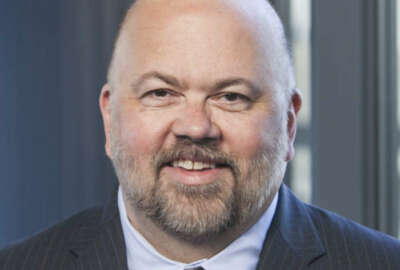
Hiring freeze: Some answers, some questions
President Trump’s memo on the federal hiring freeze answers a number of questions, but the language of the memo also raises some questions, says former DHS chief...
This column was originally published on Jeff Neal’s blog, ChiefHRO.com, and was republished here with permission from the author.
President Trump’s freeze on federal hiring was delivered on Jan. 23. The Presidential memorandum answers a number of questions, but the language of the memorandum also raises some questions. Here is what we know, and what we do not know yet.
- It is an across-the-board civilian service hiring freeze in all agencies of the executive branch (regardless of funding source). That means an agency like PTO, that gets its funding from fees, is covered. Some freezes in the past have been focused on agencies that are paid through appropriated funds.
- No vacant positions existing at noon on Jan. 22, 2017, may be filled and no new positions may be created, except in limited circumstances. That is direct and to the point. What it does not clearly address is whether agencies can honor job offers they already made. As written, the answer would be no, because the positions are still vacant.
- Department/agency heads can exempt positions to meet national security or public safety responsibilities. This is showing a degree of deference to department/agency heads to make decisions about what falls into those categories. Most administrations come to town with the idea that they are going to let their agency heads have a lot of discretion. Over time, they often pull more and more decision-making back into the White House. What we do not know is how far an agency head might go with this exemption. For example, the memorandum exempts military positions. When we think of the military, we normally mean uniformed members of the armed forces. Does this freeze apply to Defense Department civilians? As written, the answer is yes, but the secretary of defense could declare large numbers of defense civilian jobs to be necessary for national security. For example, the depot-level maintenance facilities like air logistics centers, fleet readiness centers and shipyards employ tens of thousands of civilians to perform overhauls of ships and aircraft. If they are delayed, there can be a substantial impact on military readiness. Scheduling in those facilities is so tight that hiring delays can have ripple effects that can last for months or even years. The memorandum also does not address public health positions. Past freezes have made exceptions for such positions. So what happens at the Department of Veterans Affairs and their medical personnel in VA hospitals and clinics? I anticipate OMB will offer clarifying information to address questions such as that. Most hiring freezes are followed by such Q&As because every hiring freeze memo raises questions.
- The OPM director can grant exemptions when necessary. I would expect that OPM and OMB will lay out some criteria for exemptions so agencies have an idea what might or might not pass muster.
- OMB and OPM directors to come up with a plan within 90 days to reduce the workforce through attrition. The freeze ends when the OMB plan is implemented. There are three important points in this one. First, the freeze is finite. It is likely that OMB and OPM will get the plan completed within 90 days and the freeze will be lifted. Second, there is clearly an intent to reduce the size of the civil service workforce. Finally, there is not an intent to have widespread reductions in force to accomplish the reductions.This raises at least five more questions. First, what will be the target for reductions? Will they be across-the-board or targeted to specific agencies? Second, how big will the reductions be? Some Republicans on the Hill have proposed a 10 percent reduction in the total number of employees. Third, will agencies be authorized to use early retirement and separation incentives to encourage turnover in the types of jobs and in the parts of agencies where they want to take the cuts? Attrition has the disadvantage of not being targeted. That means an agency may have more vacancies occur in mission-critical jobs than in less critical jobs. Being able to incentivize turnover where the agency wants it would help alleviate that problem. Fourth, what will the attrition plan look like? The same folks who proposed a 10 percent cut also proposed using a 1-for-3 partial freeze. That approach allows an agency to continue filling critical positions, as long as they have more turnover in less critical jobs. Finally, will there be a target date by which the agencies have to get to a new headcount?
- Contracting outside the government to circumvent the intent of the freeze is prohibited. This was expected.
- Agencies should “seek efficient use of existing personnel and funds to improve public services and the delivery of these services and reallocations may be made to meet the highest priority needs and ensure essential services are not interrupted and national security is not affected.” That means people and money can be transferred to other accounts. This provision would allow an agency to use its resources, but might reduce or eliminate cost savings from the freeze.
- The freeze does not apply to political appointees or positions where the employee serves at the will of the appointing officer. It would be absurd for a brand-new administration to freeze political appointments before they have a team in place, so no one expected the freeze to apply to politicals. The interesting provision here is that there are a lot more employees (not political appointees) who serve at the will of the appointing officer. For example, reemployed annuitants and most temporary appointees serve at the will of the appointing officer. I would be surprised if the intent was to exempt so many possible appointments and would expect to some clarification from OMB.
- The freeze is not retroactive and does not overrule collective bargaining agreements. These are common sense provisions. Trying to make a freeze retroactive for people who are already appointed is not really doable. Collective bargaining agreements cannot simply be waived by the President.
In general, this is not the hardest freeze I have seen. It provides some flexibility for critical positions and clarifying guidance from OMB and/or OPM may provide a bit more. The fact that it has an end-point and the criteria for lifting it is positive. Like most things, the devil is in the details, and the reduction plans are where I would expect to see much more controversy.
Jeff Neal is a senior vice president for ICF International and founder of the blog, ChiefHRO.com. Before coming to ICF, Neal was the chief human capital officer at the Department of Homeland Security and the chief human resources officer at the Defense Logistics Agency.
Copyright © 2025 Federal News Network. All rights reserved. This website is not intended for users located within the European Economic Area.
More commentary

Federal pay freeze likely under new Congress




